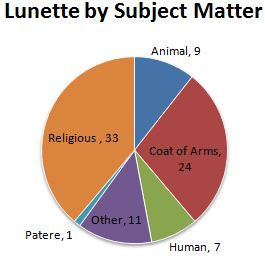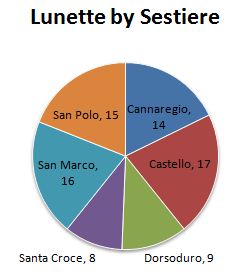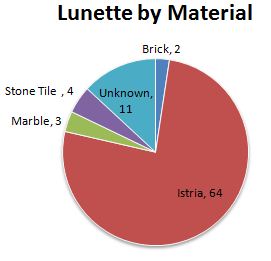Lunette
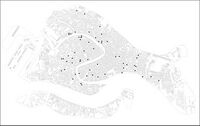 | |
| Total Number | 71 |
|---|---|
| Total Number Missing | 0 |
| Purpose | Structural/Decorative |
Lunette are decorative arches that span the tops of doorways and are a sub-set of material culture. Often accompanied by a matching portal, lunette have a distinct semi-circular shape. Reliefs, sculptures, paintings, or mosaics are often contained within an individual lunetta. Serving both functional and decorative purposes, lunette often bear part of the load of the wall in which they exist. Most lunette are found on palaces and churches because, in general, only wealthy families and institutions could afford them.
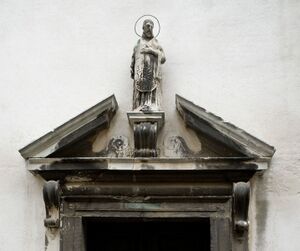
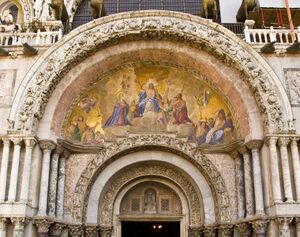
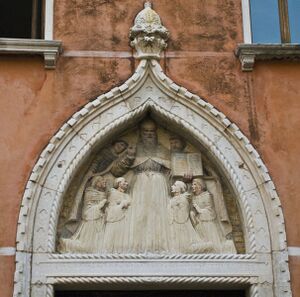
Statistics
- The term lunette is derived from the Italian lunetta, meaning "half-moon."
- 78% of lunette contain reliefs, 11% contain mosaics, 7% sculpture, and 4% fresco.
- The oldest lunetta is located in Castello and dates from 1237 AD.
- The most recent lunetta is located in Cannaregio and dates from 1932 AD.
Damage and Preservation
For general information pertaining to the sources of damage to Venetian lunnette, please see the Damage to public art page.
For general information pertaining to the restoration and preservation of Venetian lunnette, please see the Restoration and preservation of public art page.
Specific information regarding the damage and restoration needs of each lunnetta can be found on the pages dedicated to each individual lunnetta, as listed in the map below and in the navigation box under the "See Also" section of this page.
Location
{{#compound_query: |Lunette;?Coordinates;?PV ID;icon=Red Marker.png |Coordinates::+;?Coordinates;?PV ID;icon=Blue Marker.png |height=500px |format=map }}
See Also
| |||||||||||||||||||||||
References
- Rizzi, Alberto. "Scultura Esterna a Venezia." Stamperia di Venezia Editrice, 1987.
- Venice Project Center
Bibliography
- 2010 WPI PreserVenice Project Team
- 2008 WPI PreserVenice Project Team
- 2007 WPI PreserVenice Project Team
- 2000 WPI PreserVenice Project Team
